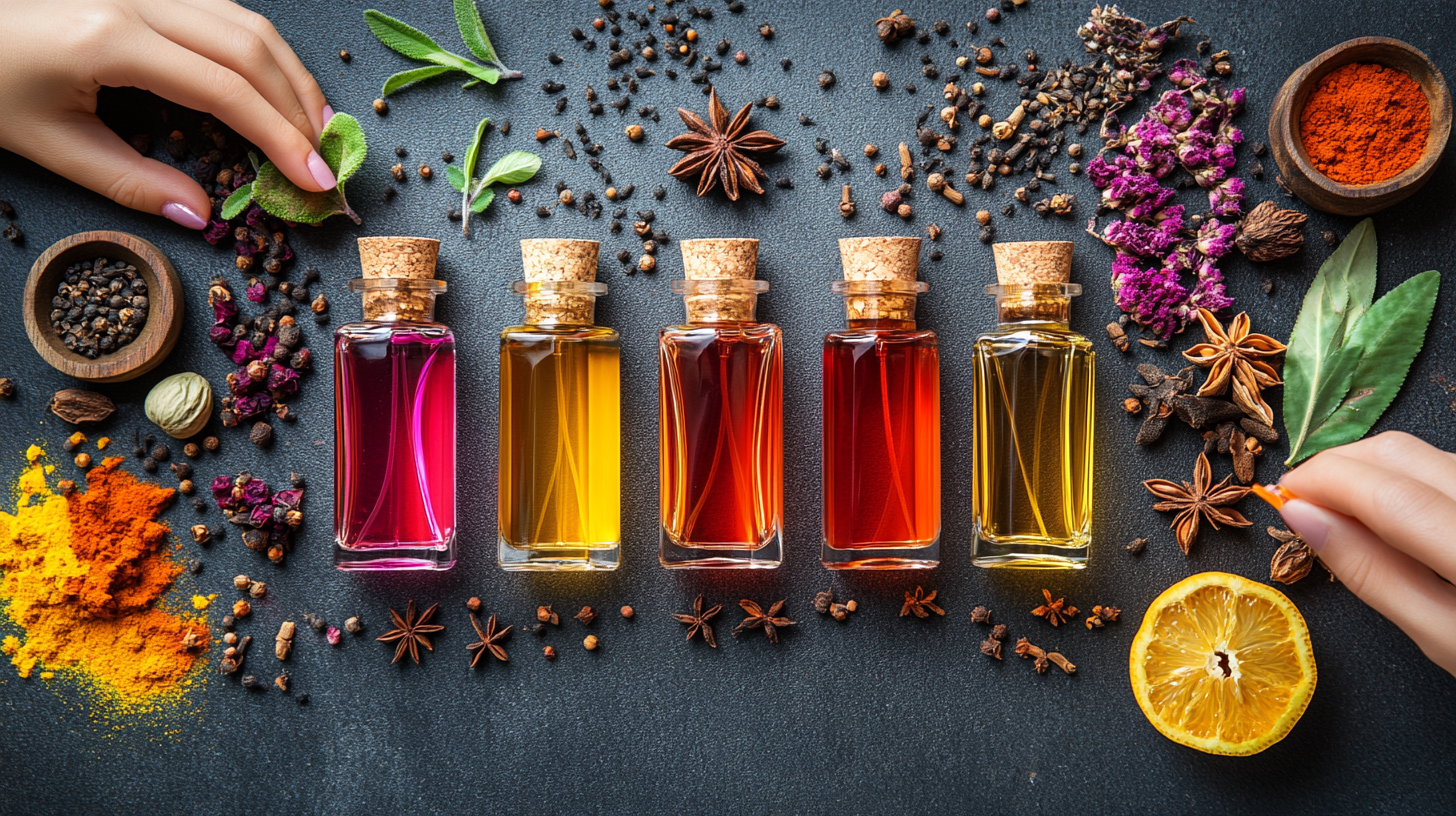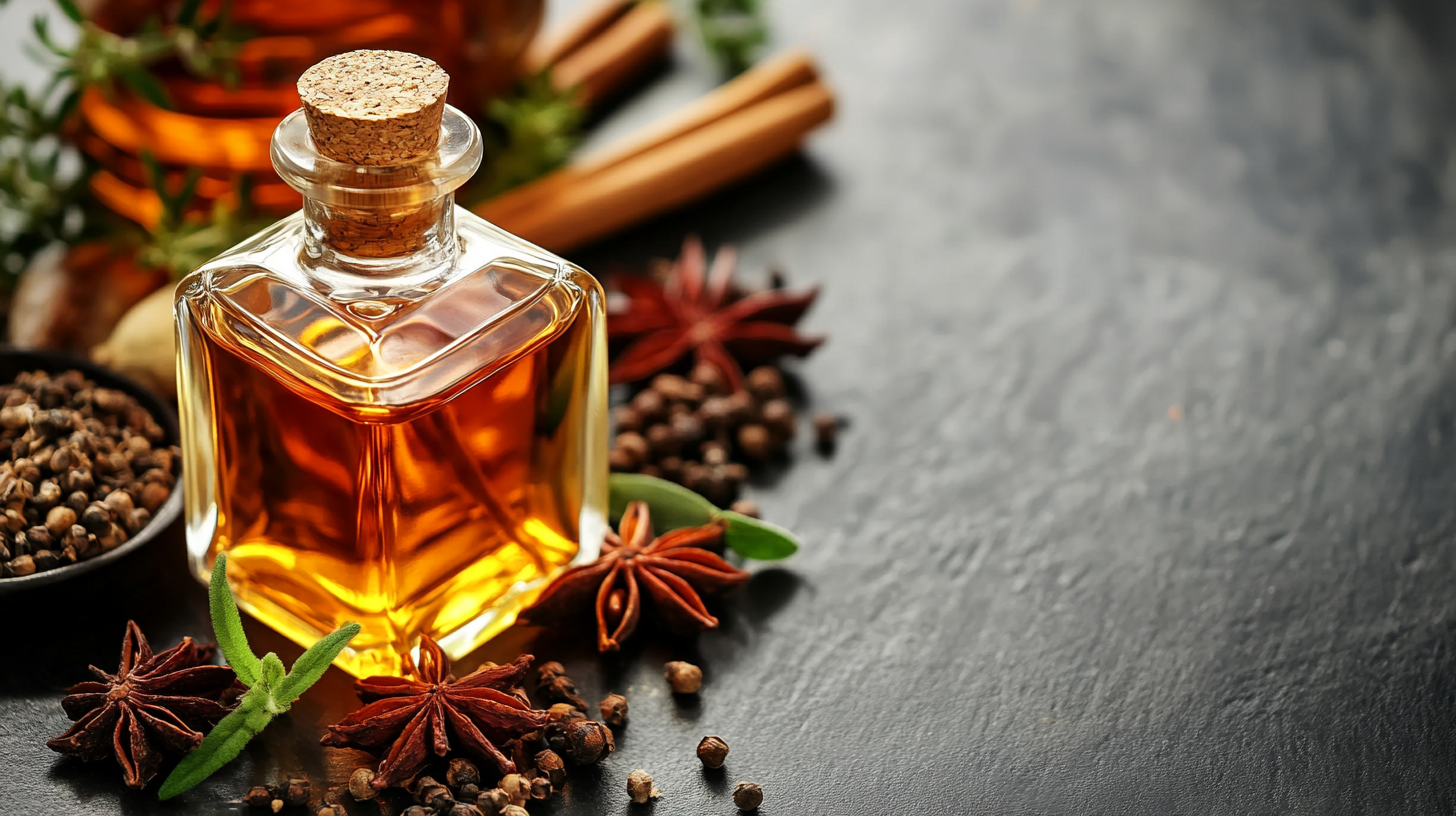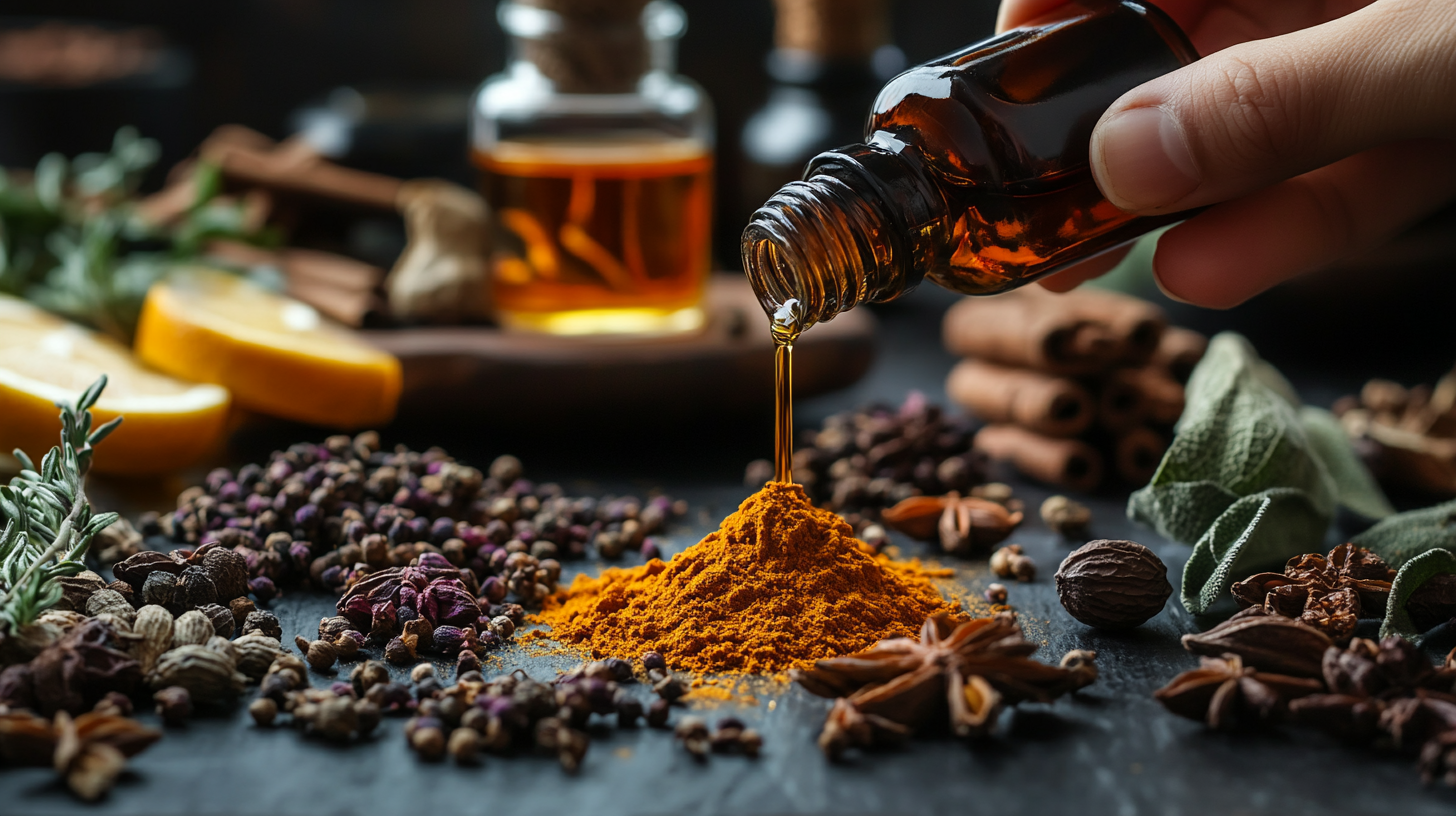
Global Market Insights: The Future of Spice Perfumes by 2025
The fragrance industry is experiencing a notable shift, with spice perfumes emerging as a captivating segment fueled by changing consumer preferences and a growing interest in unique scent profiles. According to a recent market research report by Grand View Research, the global perfume market is projected to reach USD 51.4 billion by 2025, driven in part by the rising demand for innovative fragrances that incorporate rich, spicy notes. These aromatic blends are increasingly sought after for their ability to evoke warmth and allure, appealing to both niche markets and mainstream consumers.
As the market for spice perfumes expands, brands are showing a heightened focus on sustainability and ethical sourcing of ingredients. A report by Research and Markets indicates that natural and organic fragrances, which often feature spice elements, are anticipated to garner a significant share of the market. With an evolving landscape that prioritizes authenticity and transparency, spice perfumes are poised to captivate a broader audience, transforming how consumers engage with scent and redefining luxury in the fragrance sector. By 2025, we expect spice perfumes to not only enrich the fragrance offerings but also cement their position as a vital trend in the global market.

Emerging Trends in Spice Perfumes: What to Expect by 2025
As we approach 2025, the world of spice perfumes is poised for significant transformation, driven by evolving consumer preferences and innovative fragrance compositions. One notable trend is the rising interest in sustainable and ethically sourced ingredients. Conscious consumers are increasingly seeking products that reflect their values, prompting fragrance brands to prioritize transparency in their sourcing practices. This shift not only supports environmental initiatives but also caters to a market eager for meaningful narratives behind their scents. Furthermore, the fusion of traditional spice notes with contemporary olfactory profiles is gaining momentum. Perfume creators are experimenting with unique combinations, blending classic spices like cinnamon and clove with fresh, modern elements such as citrus and green notes. This approach not only enhances the complexity of spice perfumes but also attracts a wider audience, including younger consumers looking for innovative scents that stand out in a crowded market. Finally, the role of technology in fragrance development cannot be overlooked. Advances in scent formulation and digital marketing are enabling brands to create personalized fragrance experiences for consumers. By utilizing artificial intelligence and big data, companies can analyze consumer behavior and preferences, tailoring spice perfume offerings to meet individual desires. This personalization trend will likely enhance consumer engagement and loyalty, solidifying spice perfumes as a staple in the fragrance industry by 2025.

The Influence of Consumer Preferences on Spice Fragrance Development
The future of spice fragrances is heavily influenced by evolving consumer preferences, with the market poised for dynamic development by 2025. As the global landscape of scents continues to expand, the demand for spice perfumes—characterized by their warm, rich, and often nostalgic qualities—reflects a deeper connection to individual identity and emotional experiences. Consumers are increasingly seeking fragrances that not only smell appealing but also evoke memories or convey personal narratives, driving brands to innovate and tailor their offerings accordingly.
Recent trends indicate a resurgence of interest in unique and unconventional scent profiles, such as those incorporating bitter notes. The popularity of these distinct olfactory elements suggests a shift away from mainstream fragrance trends, encouraging manufacturers to experiment with diverse ingredients and compositions. This evolution is further supported by the rise of niche fragrance brands that prioritize authenticity and storytelling in their products. As consumers explore the intricacies of scent, the emphasis on natural ingredients and sustainability is expected to play a crucial role in fragrance development, aligning with a broader cultural shift towards eco-conscious choices.
Market analyses reveal that the fragrance industry is on the brink of significant growth, driven by consumer demand for long-lasting and stable scents. This trajectory is indicative of a larger trend within the olfactory economy, where personal expression through fragrance is becoming increasingly valued. As brands adapt to these changing preferences and explore the intersections of culture, history, and innovative scent creation, the future of spice perfumes is likely to be vibrant and multifaceted.

Sustainable Sourcing: The Future of Ingredients in Spice Perfumes
The future of spice perfumes is increasingly intertwined with sustainable sourcing practices that emphasize the ethical acquisition of ingredients. According to a recent report by Market Research Future, the global spice fragrance market is expected to reach several billion dollars by 2025, driven by a rising consumer demand for unique and eco-friendly products. The trend towards sustainability is not just a preference for consumers; it’s becoming a necessity as brands seek to align their values with those of environmentally conscious shoppers.
Sustainable sourcing in spice perfumes involves the careful selection of raw materials that do not contribute to environmental degradation. A study by Grand View Research highlights that around 60% of consumers are willing to pay a premium for sustainable products. This shift is prompting fragrance companies to adopt transparent supply chains and support local farmers, ensuring that spices like cardamom, cinnamon, and nutmeg are sourced responsibly. Such initiatives not only help protect biodiversity but also empower communities that rely on these crops for their livelihoods.
Furthermore, the integration of technology in tracking and verifying sourcing practices is also gaining traction. Companies are increasingly using blockchain technology to provide transparency around the origin of their ingredients, fostering trust and accountability in the spice perfume industry. According to a report by Technavio, the market for sustainable fragrance ingredients is projected to grow at a CAGR of over 8% from 2021 to 2025. This growth underscores the importance of sustainable practices that resonate with a new generation of consumers who prioritize ethical considerations in their purchasing decisions.

Key Players in the Spice Perfume Market and Their Strategies
The spice perfume market is dynamically evolving, driven by innovative strategies from key players aiming to capture an increasing consumer base. Recent developments such as Spicetree Design Agency's selection as the digital and e-commerce partner for Jass Perfumes highlight a significant trend: brands are recognizing the power of digital presence to enhance their sales and customer engagement. This partnership will likely set a precedent for other fragrance companies to bolster their online strategies, catering to a tech-savvy clientele that favors convenience and personalized shopping experiences.
Moreover, as consumer demand for natural and clean-label products grows, there is a noticeable shift towards sourcing high-quality, sustainable spice ingredients. Companies are starting to differentiate themselves by not only focusing on fragrance but also emphasizing the ethical and environmental aspects of their product offerings. For example, the entrance of iD Fresh Food into the spices market with clean label offerings illustrates how even established brands are adapting their strategies to appeal to health-conscious consumers.
As the spice perfume market continues to expand, key players such as LVMH and CHANEL are likely to refine their marketing approaches, perhaps increasing collaborations with local artisans and spice growers. This could create unique fragrance narratives that resonate with consumers looking for authenticity and connection. As we move toward 2025, keeping an eye on these strategic shifts will be crucial for understanding the future landscape of spice perfumes.
Regional Insights: Spice Perfume Popularity Across Different Markets
The popularity of spice perfumes is set to rise across various global markets by 2025. This growth is driven by increasing consumer preferences for unique and exotic scents that evocate memories and emotions. Regions such as Asia-Pacific and North America are leading the way, with their rich cultural histories of utilizing spices not just in cuisine, but also in fragrance. The culturally significant use of spices like cinnamon, cardamom, and clove in traditional practices is influencing a new wave of perfume creations that incorporate these aromatic elements.
In the European market, the trend of sustainable and natural products is fueling interest in spice perfumes crafted from organic ingredients. Consumers are increasingly drawn to products that promise both sophisticated scents and eco-conscious sourcing. As a result, brands are exploring innovative ways to blend spice notes with floral and woody bases to create perfumes that resonate with modern sensibilities while honoring traditional olfactory practices.
Moreover, the growth of e-commerce and social media is transforming how spice perfumes reach consumers. With platforms facilitating niche brands to showcase their unique blends, there's a growing opportunity for customers to explore diverse fragrance options beyond mainstream offerings. As spice perfumes become more accessible, they are likely to gain traction among younger generations looking for individuality in their fragrance choices. This landscape indicates a promising future for spice perfumes, making them a significant category in the fragrance industry by 2025.

